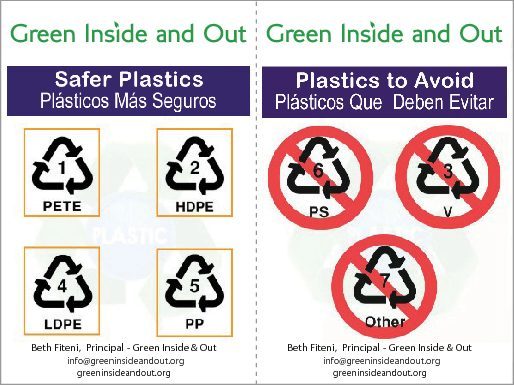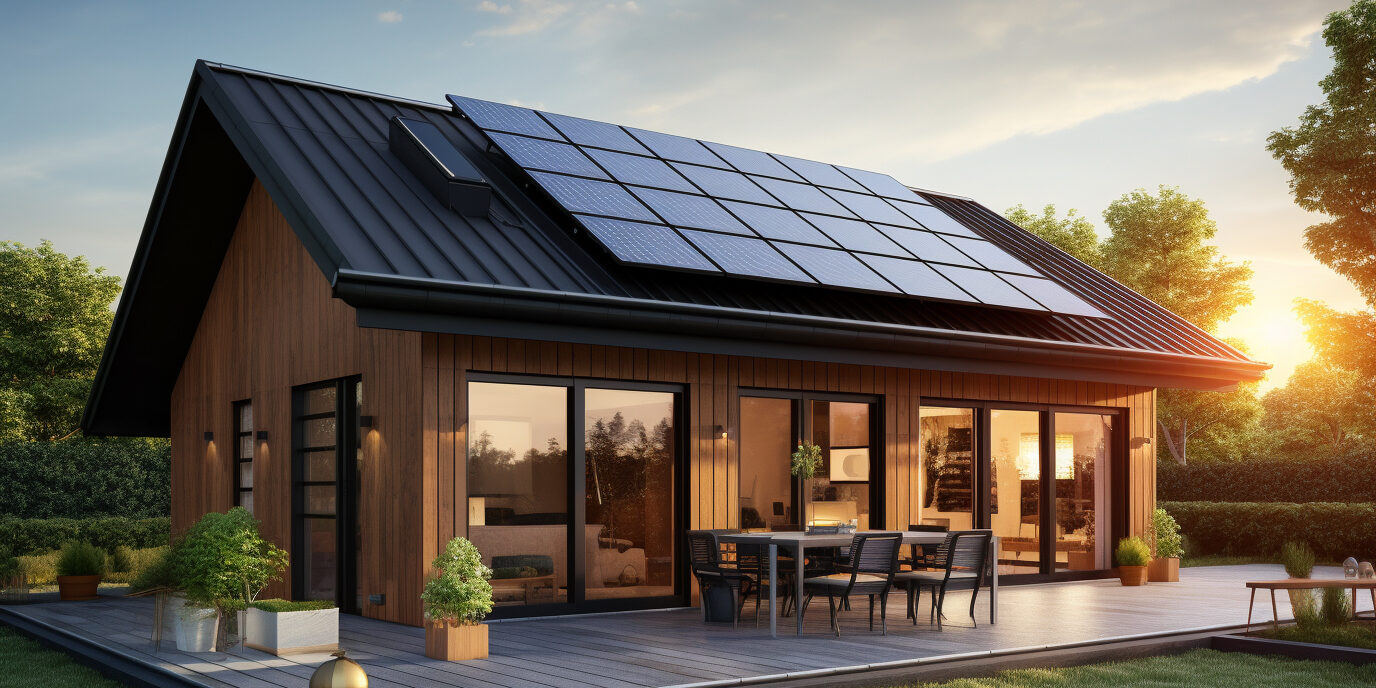Some plastics are safer than others, especially when used as food containers. Plastic containers are typically labelled with a number from 1-7 inside a recycling symbol 
- Phthalates
- Styrene
- Bisphenol A (BPA)
Safer Plastics
- Plastic #1 (PETE):
- PETE is used for: disposable food and beverage containers, bottles, cosmetic containers, household cleaner bottles.
- *Caution* Do not use multiple times for the item will crack. Additionally, do not place items in the microwave to prevent leaching.
- Plastic #2 (HDPE):
- HDFE is used for: detergent and juice bottles, tubs of butter or condiments, milk jugs, toiletries containers, folding chairs & tables.
- Plastic #4 (LDPE):
- LDPE is used for: food wraps, bread bags, squeezable bottles, grocery bags, cartons for juice and milk.
- Plastic #5 (PP):
- PP is used for: kitchenware, microwavable plastics containers & lids, baby bottles, medicinal and condiment bottles, yogurt cups.
Less Safe Plastics
- Plastic #3 Poly vinyl chloride (PVC) contains phthalates.
- PVC is used for: food plastic wrap, toys (i.e.: rubber duckies and beach balls, shower curtains, children’s raincoats, garden hoses, car parts, etc.)
- Effects of Phthalates: used to soften plastic (sometimes also used in cosmetics). Hormone disruptor, and has been shown to damage the liver, kidneys, lungs, and reproductive system — particularly the developing testes in animal studies. [1]
- Plastic #6 polystyrene (aka Styrofoam): contains styrene & nonylphenol
- Polystyrene is used for: found in cups, plates, and plastic/foam take-out containers, coolers, meat and fish trays; carpet backing
- Effects of Styrene: Chronic exposure to styrene may result in effects on the central nervous system such as headache, fatigue, weakness, and depression, hearing loss, and neuropathy.[2] The National Toxicology Program has listed styrene as "reasonably anticipated to be a human carcinogen." [3]
- Effects of Nonylphenol: Exposure via contact includes a burning sensation, cough, labored breathing, sore throat, unconsciousness, skin irritation and burns. Upon ingestion, abdominal pain, diarrhea, nausea, and sore throat. [4]
- Plastic #7 (usually polycarbonate)- may contain Bisphenol A (BPA).
- Polycarbonate is used for: baby bottles and sippy cups, canned food & infant formula containers, some dental resins, plastic food containers, water bottles, thermal paper store receipts
- Effects of Bisphenol A (BPA): endocrine disruptor that acts as an estrogen and hormone disruptor. Has been shown to play a role in female and male infertility, early puberty, breast and prostate cancer and several metabolic disorders. [5]
The following wallet guides were made to make it simple—put one in your wallet and you can easily check whether your container is safe or not.
Download & Print PDF: Plastics Info Card

TIPS!!
- Remember the rhyme: 5, 4, 1 and 2 – all the rest are bad for you!
- See our wallet card to help you remember.
- Do not microwave in a plastic container or leave the saran wrap on the microwave. “Microwave safe” simply means it will not melt; the potential for leaching remains.

